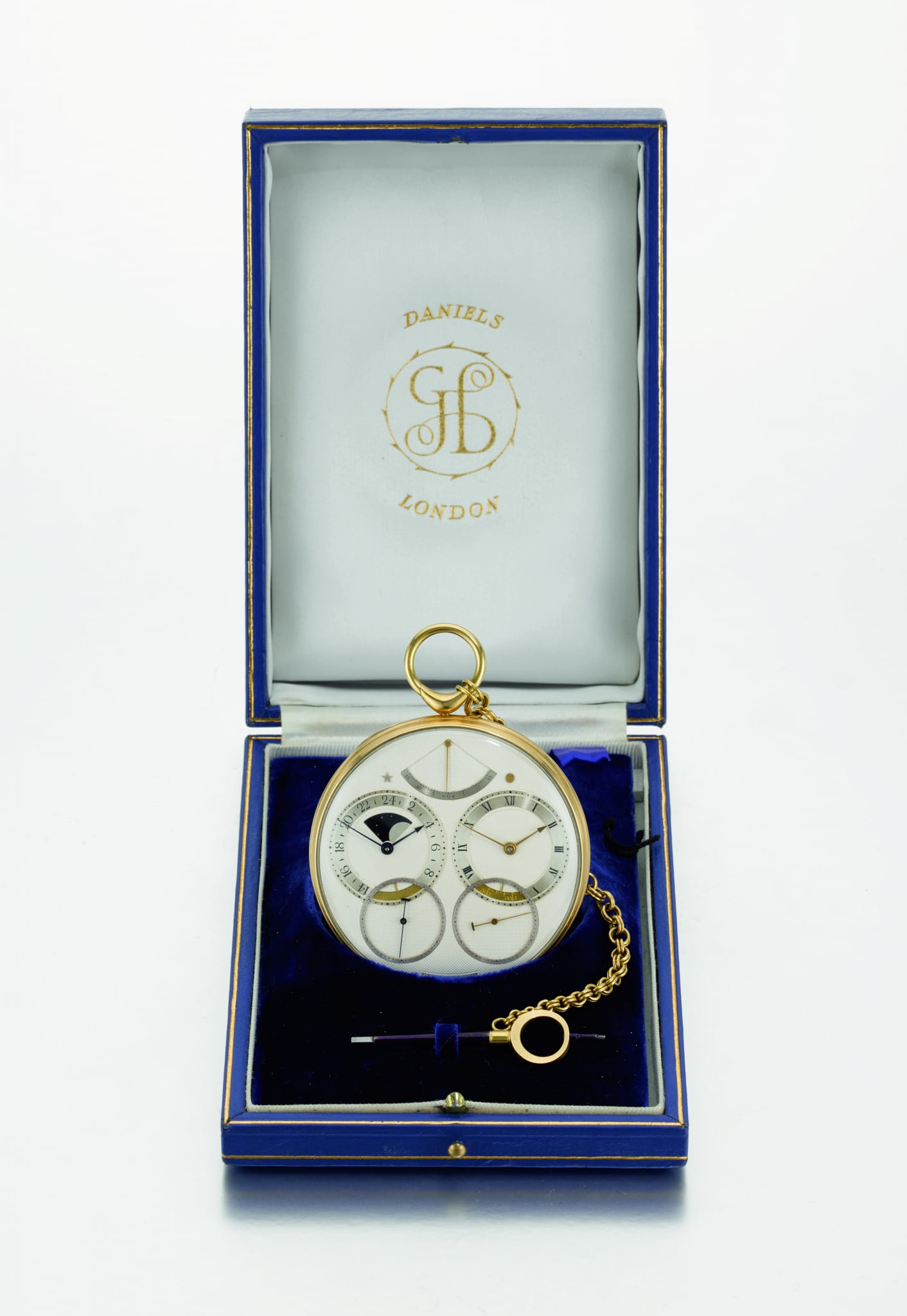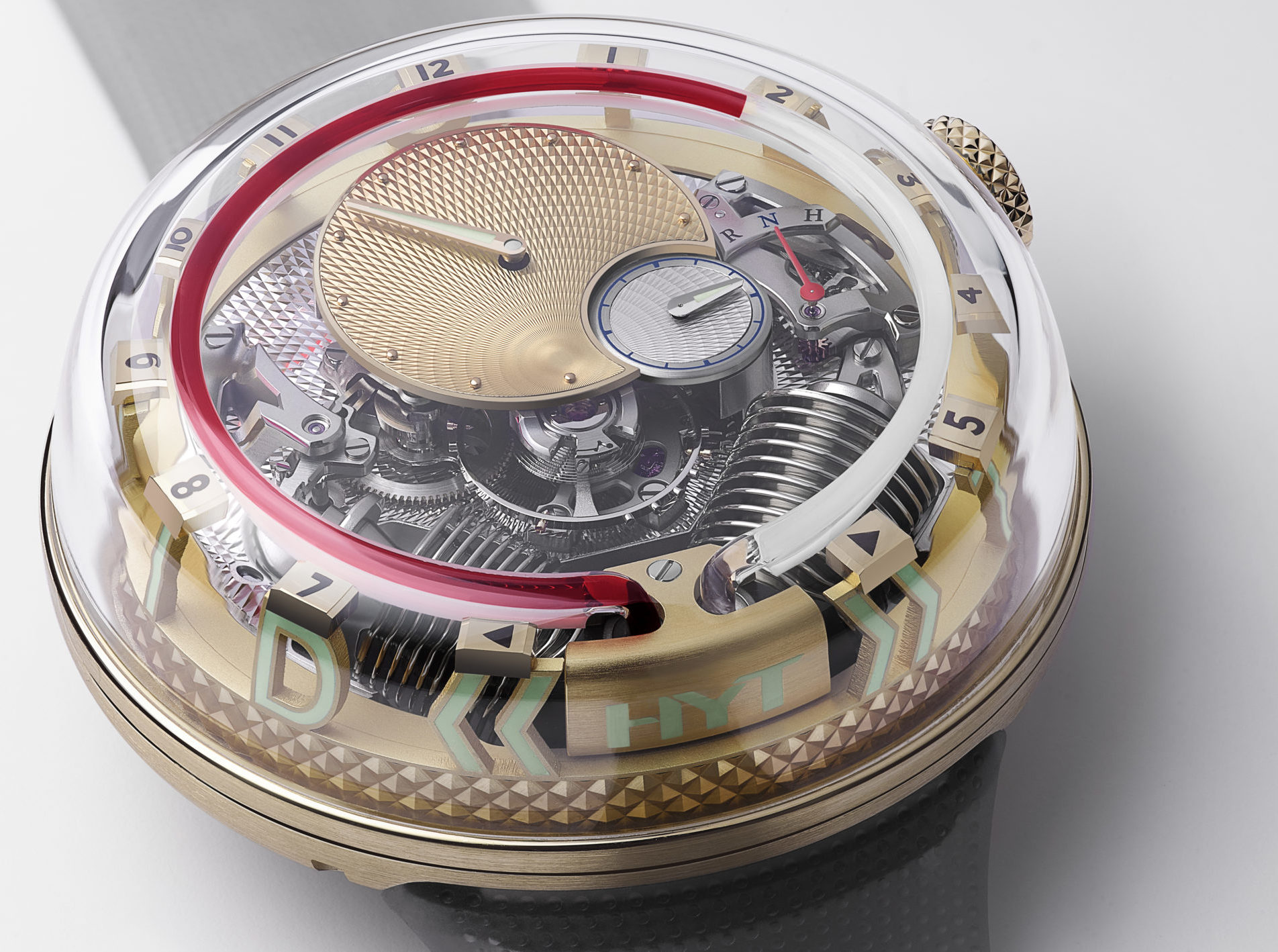Sky high demand for key Rolex, Patek Philippe and Audemars Piguet models is raising the profile of luxury watches as an investment category. But if you can’t offer your customers these unicorn watches, perhaps you could steer them towards interesting alternatives from independent watchmakers, suggests Tom Mulraney.
It’s no secret that desirable watches from many of the world’s top luxury watchmakers are in increasingly short supply. Particularly those of the steel variety. Thanks to the phenomenon of social media, rising levels of disposable income across the developing world and the surprising degree of restraint shown by brands so that demand, in many cases, far outstrips supply.
One of the most visible knock-on effects of this is the booming market for pre-owned watches. But there’s also another, more subtle shift underway. Hardcore collectors, tired of not being able acquire mainstream, sought-after pieces are instead turning their attention to the fascinating world of independent watchmaking.
At the same time, the luxury watch industry is undergoing yet another period of consolidation. This time though, the focus of the big groups isn’t acquisitions. Instead, it’s streamlining retailer networks, centralizing control of distribution and finding ways to sell direct to consumers via monobrand boutiques and e-commerce.
This in turn is forcing the hand of multi-brand retailers, who are suddenly and unexpectedly finding long-standing accounts with major brands terminated. One way to fill the void left behind and offer compelling alternatives for their loyal clientele is to introduce independent watchmakers into their stores.
But what exactly does independent watchmaking look like in this day and age? The romanticized idea of course is that of a lone man sitting at his workbench with a single light on, loupe over his eye, working away on a complex movement without a computer screen in sight. (It’s generally men, although female watchmakers such as Eva Laube and designers like Fiona Krüger are making their mark in the industry.) And indeed, this picture may have been somewhat accurate at one point in history. In the modern day though, most established independent watchmakers such as F.P. Journe, Kari Voutilainen or Urban Jurgensen are supported by complex infrastructure and teams of specialist craftspeople and artisans. Some within their own company, and many more via third-party suppliers. Much like contemporary artists, these individuals are the figureheads of the brands they have built and serve as the creative visionaries for conceiving new models and ways of doing things

Yet, just as with contemporary art, more often than not it’s a team of people who are responsible for actually bringing the vision to life. Of course, there are some watchmakers who still do just about everything themselves, perhaps with the support of a handful of individuals. Thomas Prescher Haute Horlogerie is a good example of this. Located on the shores of Switzerland’s beautiful Lake Biel, Prescher specializes in bespoke complicated timepieces, and makes just about everything in-house. From the movements right down to the hands on the dial. As a result, the workshop only produces a tiny volume of pieces each year.
At its core though, what defines independent watchmaking in the 21st-century is the ‘spirit’ of independence that guides decision-making in these brands. Independent ownership means they not only can, but also must take more risks and try different things. As smaller players in a very crowded market with miniscule marketing budgets compared to their major group peers, these brands live or die by their ability to make watches that capture the attention and hearts of potential buyers and collectors. Not surprisingly, this is also what makes them an attractive proposition to retailers.

Many – though not all – of these small independent brands are reliant on their retailers’ networks to raise awareness of and ultimately sell their products. This translates into a willingness to negotiate more favorable terms and a sense of loyalty that has largely disappeared with bigger brands. They also add some spice to generic industry offerings and get customers excited about discovering something new and different, unique models which they can’t just walk down the road for a price check.
The flip side to this of course is that selling these types of watches is inherently more difficult and time consuming. Small, or in some cases no budgets at all for marketing, means that brand awareness is almost non-existent for all but the most established independent watchmakers. The advent of social media has certainly helped with this in recent years, but the reality remains that for many retailers selling independent brands require a significant investment of time and money. An investment, which until recently, many have been reluctant to make.
Frost of London, which has built its business on finding and introducing new and exciting independent brands, such as Franck Muller, HYT and Rebellion, to their celebrity clientele sees both sides of the coin. “Financial investment is a big challenge,” acknowledges Dino D’Auria, manager and co-founder of Frost of London. “But the advantage is that there is often less red tape with independent watchmakers.” Likewise, William & Son, another London-based institution, has a well-earned reputation for stocking a curated selection of high-end independent watch brands that appeal to the sophisticated tastes of fine timepiece connoisseurs. Think names like De Bethune, Laurent Ferrier and Romain Gauthier.
These watches may not sell in the same volumes as the well-known players from the major groups, yet that’s one of the very reasons that makes them appealing to the collector sick of being told, ‘I’m sorry that [insert mainstream steel luxury sport watch model here] is not available.’ Of course, popular models from independent brands can also be in short supply. Low production volumes are inherent in independent brands due to the smaller scale of their operations. But unlike with the big players, would-be buyers aren’t greeted with an exasperated eye roll and promises of inclusion on a mythical wait list.
Instead, they are welcomed with open arms and invitation to discuss alternative options. Even if a specific, sought-after model is no longer available, independent brands are usually willing to go the extra mile to keep would be customers happy. And coming back for more. This includes offering additional services like personalization, customized designs or even completely bespoke timepieces built specifically to the client’s requirements. And you don’t necessarily need to have purchased five watches from the same brand already to ‘qualify’.
This is particularly attractive to collectors who have already had their fill of the mainstream offerings and are looking for guidance on something different. “As directors, we are very influential in creating pieces,” explains Dino. “We have to think what can someone that already has everything want? Our customer may desire a certain complication or quicker than average manufacturing. Each brand has certain parameters we have to work around so we have to know which brand will meet our customers’ expectations and we mediate between to make the impossible, possible!”
Across the pond in the United States, this is already common place. In fact, a number of well-established, prominent retailers have been incorporating independent brands into their product offerings for years now. New York’s famed Cellini Jewelers on Park Avenue, for example, offers an impressive selection from some of the world’s most innovative independent watchmakers, alongside a number of familiar names from the major groups. Meanwhile, over in California, Stephen Silver specializes in curating timepieces from Switzerland’s most awe-inspiring independent watchmakers for its discerning clientele. Stand-out names include the likes of Bovet, Greubel Forsey and Urwerk, to list but a few.
It’s not just the high-end, impossibly complicated pieces that appeal to collectors though. anOrdain, a small independent start-up from Glasgow, Scotland, is well on its way to building a cult following online thanks to its beautiful enamel dials crafted entirely in house. Its latest release, Model 2, retails for less than £1000 ($1250)and already has a healthy waiting list. Company founder, Lewis Heath attributes the model’s success to the fact that customers appreciate the local craftsmanship angle and feel that they’re getting real value for their money. And because everything is done in-house, the brand also occasionally accepts special requests to create unique, one-off dials. An appealing option for those looking to stand out amidst the daily sea of wrist shots posted on Instagram.
From a retail standpoint though, not at all independent brands are created equal. There are a number of additional factors beyond customer appeal to consider before going down the path of becoming an official stockist. Chief among them is does their business model seem sustainable? Swiss-French company Klokers generated huge momentum in its early years, recording two of the most successful crowdfunding projects of all time for a watch company. Yet despite raising over a €1 million and creating some real buzz online, the company closed its doors for good earlier this year after failing to gain traction in the wider market.
Of course, too much success too quickly also brings its own set of challenges. Does the brand have the infrastructure and logistics in place to ensure consistent inventory levels can be maintained and possibly even ramped up to meet increased demand? Ditto for quality control standards and after-sales service. More than a few independent watch brands have become victims of their own success over the years, with names like Ladoire, Breva and more recently, Klokers, serving as cautionary tales. The last thing any good retailer wants is an unhappy customer, especially if it has limited ability to do anything about the situation.
Unfortunately, some lessons can only be learned by experience. “There are some watchmakers we know we cannot work with on creating unique pieces” says Dino wistfully. “They have let us down in the past and this, in turn, has had a knock-on effect on our clients and sales.” That said, when things go well, they can go really well, for both the retailer and the watch brand. For example, Frost has just launched two limited edition Franck Muller Vanguard models; the only pieces available in yellow gold worldwide. Incorporated in the design is the retailer’s logo, a sign of the mutual respect and admiration the two brands have for each other.
 About the author: Tom Mulraney is a 10-year veteran of the watch industry. He is the publisher and editor of The Watch Lounge, a digital magazine with a unique take on the world of luxury watches. www.thewatchlounge.com
About the author: Tom Mulraney is a 10-year veteran of the watch industry. He is the publisher and editor of The Watch Lounge, a digital magazine with a unique take on the world of luxury watches. www.thewatchlounge.com

